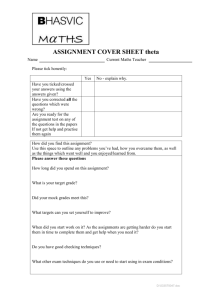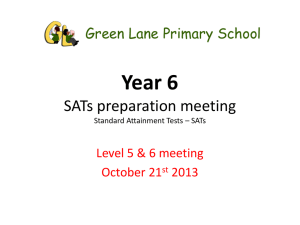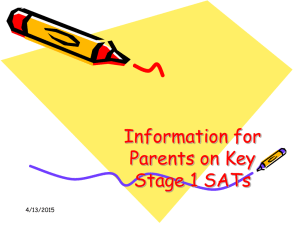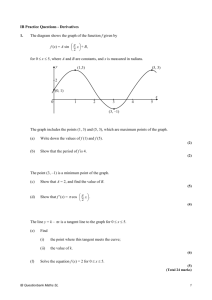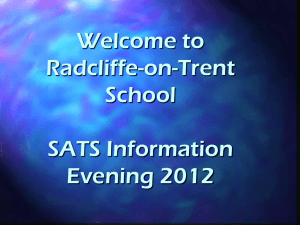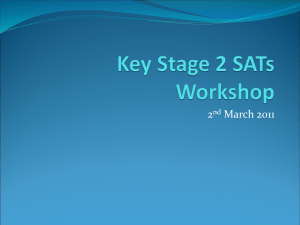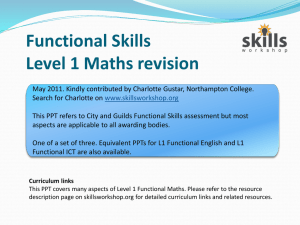Preparation for the exam
advertisement
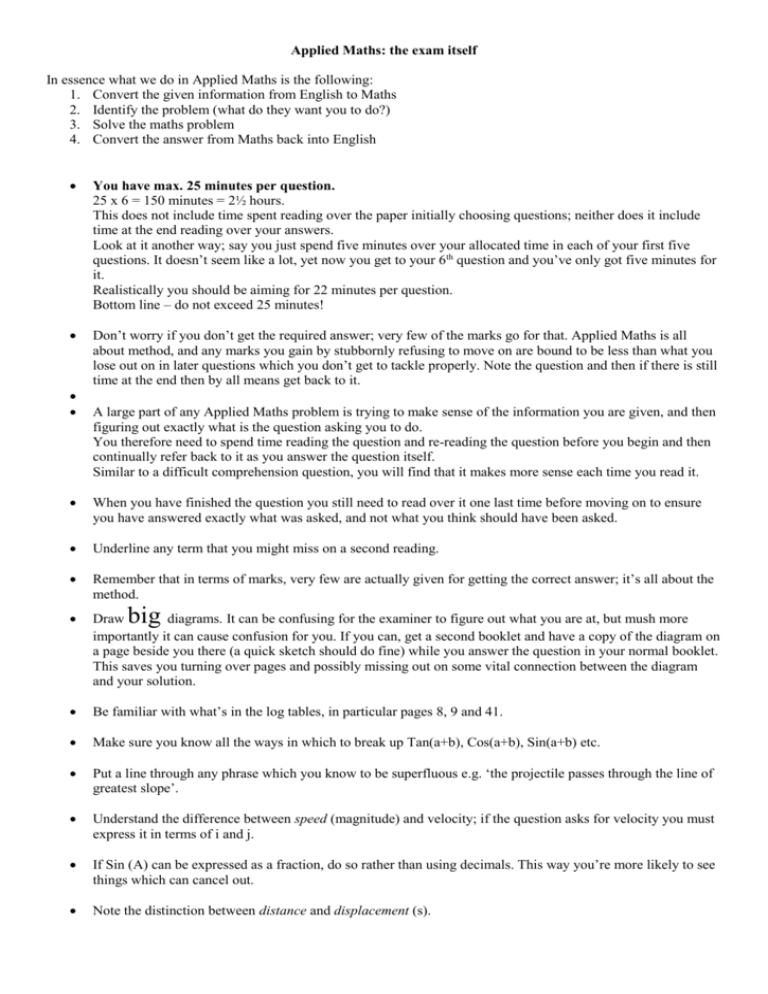
Applied Maths: the exam itself In essence what we do in Applied Maths is the following: 1. Convert the given information from English to Maths 2. Identify the problem (what do they want you to do?) 3. Solve the maths problem 4. Convert the answer from Maths back into English You have max. 25 minutes per question. 25 x 6 = 150 minutes = 2½ hours. This does not include time spent reading over the paper initially choosing questions; neither does it include time at the end reading over your answers. Look at it another way; say you just spend five minutes over your allocated time in each of your first five questions. It doesn’t seem like a lot, yet now you get to your 6th question and you’ve only got five minutes for it. Realistically you should be aiming for 22 minutes per question. Bottom line – do not exceed 25 minutes! Don’t worry if you don’t get the required answer; very few of the marks go for that. Applied Maths is all about method, and any marks you gain by stubbornly refusing to move on are bound to be less than what you lose out on in later questions which you don’t get to tackle properly. Note the question and then if there is still time at the end then by all means get back to it. A large part of any Applied Maths problem is trying to make sense of the information you are given, and then figuring out exactly what is the question asking you to do. You therefore need to spend time reading the question and re-reading the question before you begin and then continually refer back to it as you answer the question itself. Similar to a difficult comprehension question, you will find that it makes more sense each time you read it. When you have finished the question you still need to read over it one last time before moving on to ensure you have answered exactly what was asked, and not what you think should have been asked. Underline any term that you might miss on a second reading. Remember that in terms of marks, very few are actually given for getting the correct answer; it’s all about the method. Draw diagrams. It can be confusing for the examiner to figure out what you are at, but mush more importantly it can cause confusion for you. If you can, get a second booklet and have a copy of the diagram on a page beside you there (a quick sketch should do fine) while you answer the question in your normal booklet. This saves you turning over pages and possibly missing out on some vital connection between the diagram and your solution. Be familiar with what’s in the log tables, in particular pages 8, 9 and 41. Make sure you know all the ways in which to break up Tan(a+b), Cos(a+b), Sin(a+b) etc. Put a line through any phrase which you know to be superfluous e.g. ‘the projectile passes through the line of greatest slope’. Understand the difference between speed (magnitude) and velocity; if the question asks for velocity you must express it in terms of i and j. If Sin (A) can be expressed as a fraction, do so rather than using decimals. This way you’re more likely to see things which can cancel out. Note the distinction between distance and displacement (s). big Leave Question 1 (Linear Acceleration) until last. Why? It can suck you in and spit you out: 1. All other questions have a structure/method where you can pick up most marks (or at the very least attempt marks) once you follow the method. But in Linear Acceleration there may not be a standard method, and therefore you may end up picking up very few marks if you take a wrong turn at the beginning. 2. With most other questions you can get a fair idea of how difficult the question is by reading it once or twice. With Linear Acceleration this is much more difficult. 3. You can often feel that you are just one line away from solving the problem, and as such may be reluctant to ‘walk away’ and leave the question unfinished. This can be very dangerous because not only can you heading up a cul-de-sac, but you could also be cutting into time allocated to another question where the marks can be picked up much more easily.
